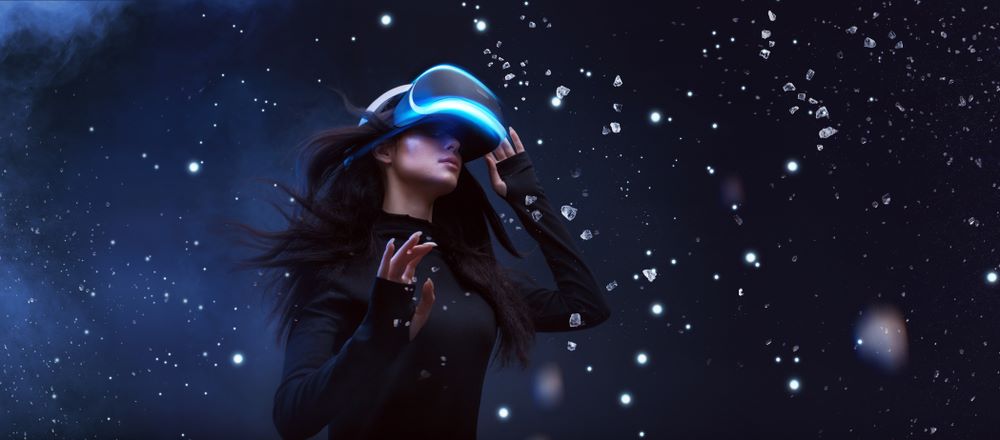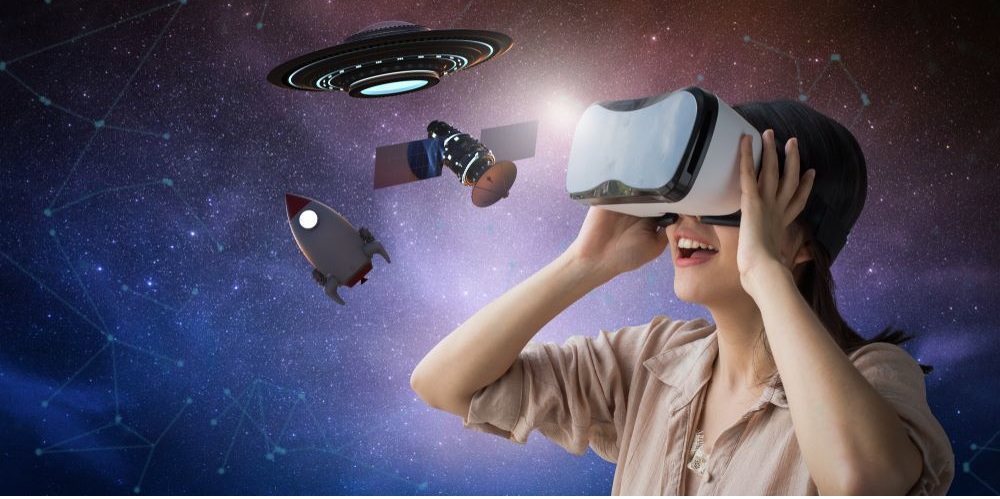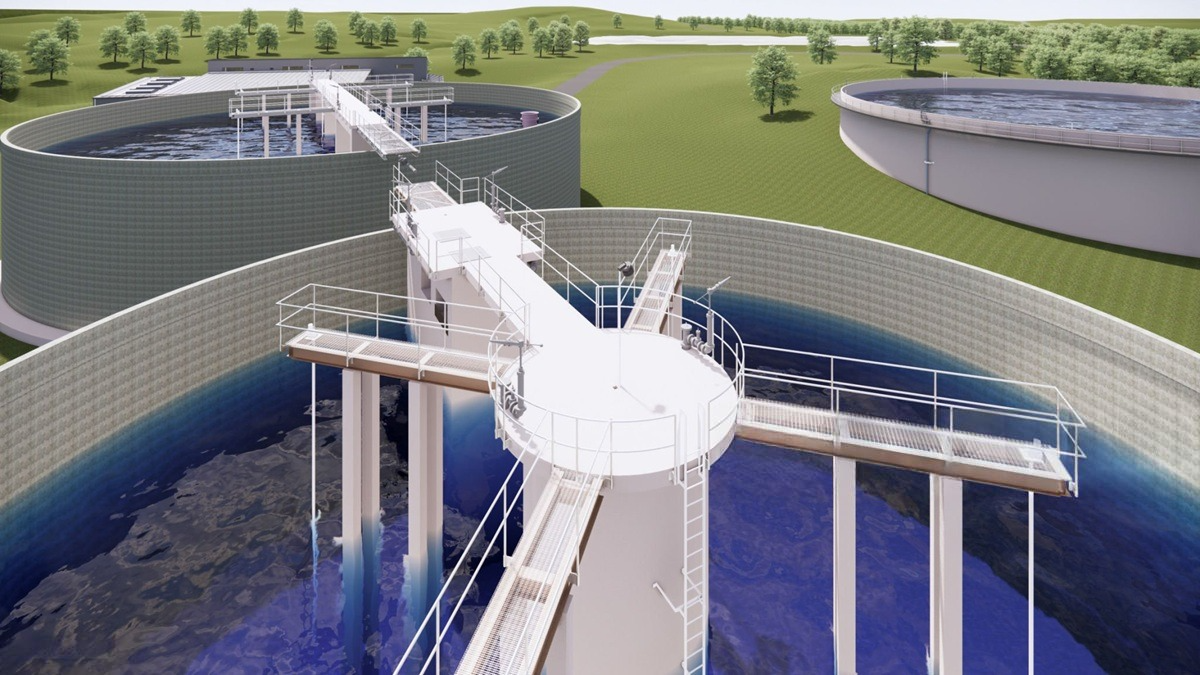Teaching Special Relativity Using Virtual Reality

While teaching physics, have you ever wondered what it would be like to experience the special theories of relativity firsthand?
How about witnessing the expressive effects of length contraction and time dilation?
Well, we know that teaching the complex concepts of special relativity with the traditional education approach can be hard and challenging because of its abstract concepts and counterintuitive nature.
It challenges the common-sense understanding of space and time, making it hard for the students to properly connect with the subject matter.
What can be done in this scenario?
How about changing the pages of equations and thoughts with immersive visualization in the virtual reality world?
In the blog below, we will explore ways to teach special relativity using Virtual Reality.
Special Relativity in VR

Virtual reality has completely changed the way we used to teach the special relativity concept.
With virtual reality education in the science domain, students are offered an engaging and exciting approach to subjects like special relativity that have often been considered as a matter of mathematical equations and theoretical debates.
But, with the integration of VR into education, it has become easy for educators to teach the concept of special relativity.
With VR, students can step into the virtual classroom where they can witness the effects of special relativity in action.
Just like taking a journey through Space and time.
Quite Immersive. Right?
Imagine a scenario where teachers are explaining the contraction of length through VR, where students can see the change in the size of the object as they approach the speed of light themselves.
With VR all the abstract concepts of special relativity become tangible.
☑️ Understanding Time Dilation
How can students visualize the concept of Time dilation?
In physical science, the idea of time dilation often leaves the students scratching their heads in confusion. Well, why not?
After all in this concept, time behaves differently with respect to the motion relative time of the object to an observer.
Let’s make it simple to understand.
When you move at high speeds, almost closer to the speed of light, you can observe that the time appears to slow down for you but not for someone who is at rest.
Consider it as the universe’s very own time-wrapping magic trick which is a challenging feat for students to understand in the traditional classrooms.
But with the applications of Virtual reality in learning concepts like special relativity, students are now allowed to headfirst into this enigmatic dimension of time.
This means now they can not only read or listen about this in a lecture, instead, they can now experience it firsthand.
Imagine if you are wearing a VR headset and entering the virtual spaceship moving in space at a substantial fraction of the speed of light.
At the front, there is a control panel and the top CLOCK starts ticking at a slower speed, too than you were expecting.
While the second drags on it becomes abundantly clear proving that the concept of time dilation is not merely a theoretical concept, but a true phenomenon.
But what is the most important part of this simulation?
It is its interactivity.
VR not only allows the students to observe time dilation, but it also allows them to experiment with it. Within the virtual environment, they can adjust the speed of the spaceship.
Not only this, but they can also change the frame of reference of the observer along with watching how time responds in real time.
Such hands-on experience fosters a deeper understanding of time dilation.
VR goes beyond rote memorization and equation-solving, encouraging students to think critically and develop a profound intuition for the subject matter.
Special relativity in VR makes learning more accessible igniting a passion for physics and inspiring the next generation of Hawkings and Einstein.
Virtual Reality - The Ultimate Teacher's Aid
Teachers and educators have long sought creative and engaging methods to teach special relativity. And, the ideal tool to achieve this is virtual reality technology.
It is a fact that in the traditional classroom setup, the students often struggle to translate theoretical concepts into tangible experiences.
But now with the integration of Virtual reality in education, passive learning is shifting into an interactive and dynamic experience.
In the virtual world, students become active participants while learning. They are able to manipulate variables, change speeds, and observe how these alterations directly impact the observed effects.
They can explore extreme conditions that would be impossible, impractical, or even dangerous in a real-world setting.
This level of interactivity goes beyond what textbooks or even simulations can offer.
They can witness clocks ticking at different rates and grasp the profound implications of Einstein's theory.
It's an experience that not only educates but also leaves a lasting impression.
In a VR environment, students can venture into the cosmic unknown without leaving the safety of the classroom.
They can witness the mind-bending effects of special relativity in scenarios that challenge our conventional understanding of the universe.
It's a level of experiential learning that opens up new frontiers in education.
Moreover, VR overcomes the physical limitations that allow students from all corners of the globe to participate in the same immersive educational experiences.
This global accessibility not only enriches the learning environment but also fosters a sense of connection and collaboration among students worldwide.
"Experience the wonder of special relativity firsthand! Jump into virtual reality and journey through the mysteries of the universe with us."
Future of Science Education with VR
Well, the potential of virtual reality in science education is not limited to teaching the concept of special relativity.
If we look into the future of Science with VR, here is what we can expect-
☑️ A dynamic Learning Environment
Imagine a classroom where students can step inside a molecule to understand its structure or travel back in time to witness a historical scientific discovery.
With VR, these scenarios are not just within reach, but they're immersive, interactive, and unforgettable.
Take, for instance, the intricacies of quantum mechanics.
This field, rife with abstract ideas and mathematical complexities, often challenges even the brightest minds.
However, with a special relativity in VR experience, students can navigate the quantum world in a three-dimensional space.
They can observe particles behaving in ways that defy classical intuition.
Suddenly, the quantum realm becomes less of an enigma and more of a tangible reality.
☑️ Breaking Down Complex Concepts
When it comes to breaking down complex scientific ideas into digestible, visual representations, Virtual reality technology is dominant.
Let’s consider the theory of relativity itself.
Time dilation, a concept that initially appears baffling, can be vividly demonstrated in a VR setting.
With VR, Students can witness clocks ticking at different rates depending on their relative motion.
Such visual, hands-on experience turns an abstract concept into a concrete reality.
Moreover, in fields like astrophysics, where students grapple with vast distances and mind-boggling scales, VR offers a unique solution.
Students can embark on virtual journeys through the cosmos, visiting distant stars and galaxies.
They can witness the effects of gravity on celestial bodies, all from the comfort of their classroom.

Get the App from Meta Store: Download Now
☑️ Interactive Simulations and Experiments
One of the most compelling aspects of using VR for science education is the ability to conduct interactive simulations and experiments.
Students can manipulate variables, observe real-time outcomes, and gain a deeper understanding of cause-and-effect relationships.
In chemistry, for instance, students can assemble molecules, observe chemical reactions, and understand the fundamental principles that govern chemical behavior.
This hands-on approach fosters a sense of exploration and experimentation that's often lacking in traditional classroom settings.
☑️ Accessibility and Inclusivity
As we hurtle into an increasingly technological age, equipping students with the skills to navigate complex scientific concepts is paramount.
VR offers a glimpse into this future, where immersive learning experiences are not just a supplement, but an integral part of education.
Conclusion
In conclusion, we can say that with the advancement of technology, VR’s application in learning the special relativity concepts is nothing but only set to grow.
So, whether you are a student who is curious to know about the wonders and mysteries of science or an educator who wants to explore creative ways to impart knowledge, special relativity in VR is a journey you won't want to miss.
After all, it is not only about teaching the concept, instead, it is all about making these concepts come alive.
Happy virtual exploring!

.png)
.png)


.png)